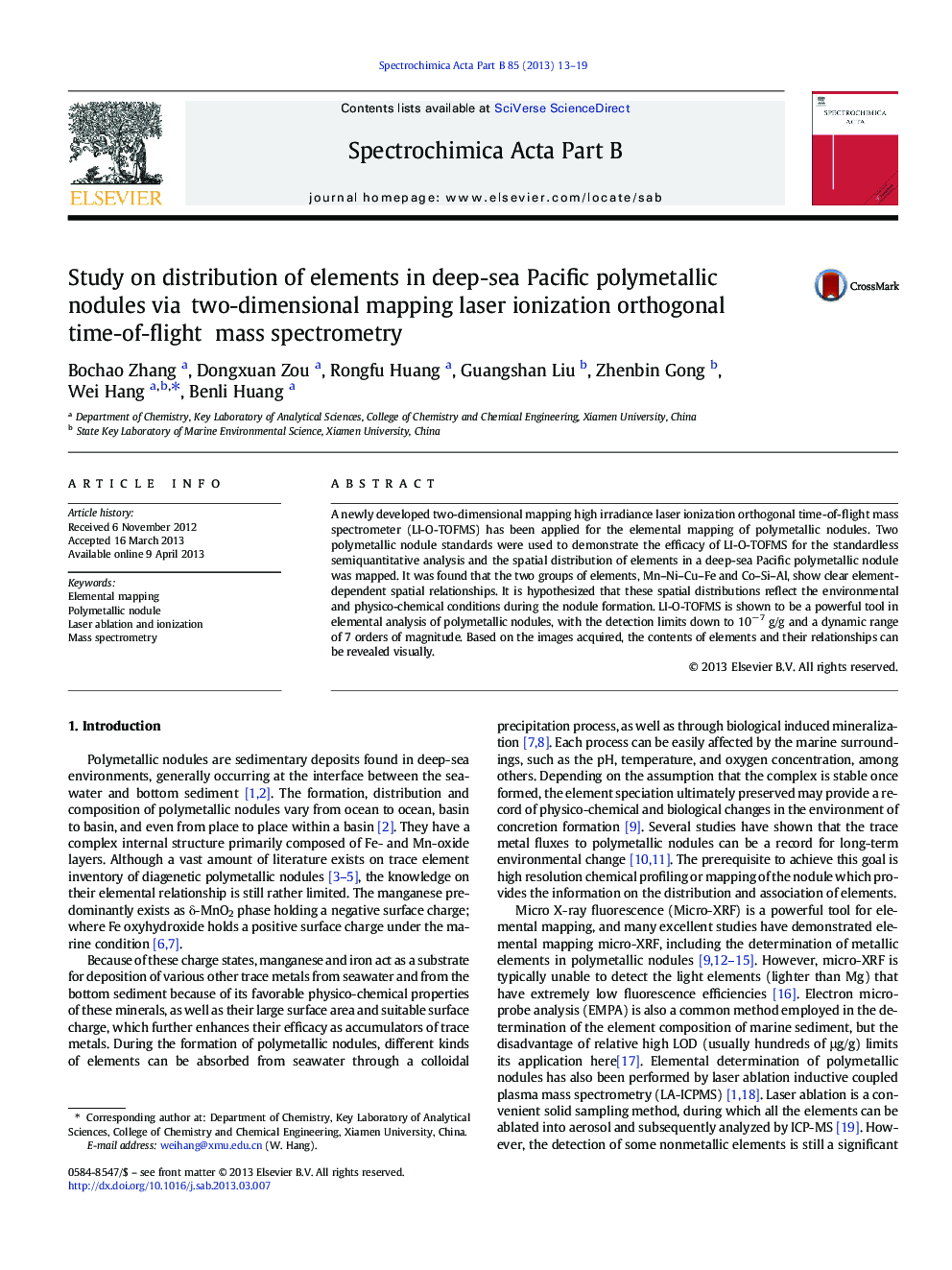| Article ID | Journal | Published Year | Pages | File Type |
|---|---|---|---|---|
| 1239668 | Spectrochimica Acta Part B: Atomic Spectroscopy | 2013 | 7 Pages |
•LI-O-TOFMS was applied for the elemental mapping of polymetallic nodules.•The contents and distributions of elements of a polymetallic nodule were revealed.•2 groups of elements, Mn–Ni–Cu–Fe and Co–Si–Al, show inter-element relationships.•Physico-chemical conditions during the nodule formation could be reflected.•LI-O-TOFMS is proven to be a powerful tool for the analysis of polymetallic nodules.
A newly developed two-dimensional mapping high irradiance laser ionization orthogonal time-of-flight mass spectrometer (LI-O-TOFMS) has been applied for the elemental mapping of polymetallic nodules. Two polymetallic nodule standards were used to demonstrate the efficacy of LI-O-TOFMS for the standardless semiquantitative analysis and the spatial distribution of elements in a deep-sea Pacific polymetallic nodule was mapped. It was found that the two groups of elements, Mn–Ni–Cu–Fe and Co–Si–Al, show clear element-dependent spatial relationships. It is hypothesized that these spatial distributions reflect the environmental and physico-chemical conditions during the nodule formation. LI-O-TOFMS is shown to be a powerful tool in elemental analysis of polymetallic nodules, with the detection limits down to 10− 7 g/g and a dynamic range of 7 orders of magnitude. Based on the images acquired, the contents of elements and their relationships can be revealed visually.
